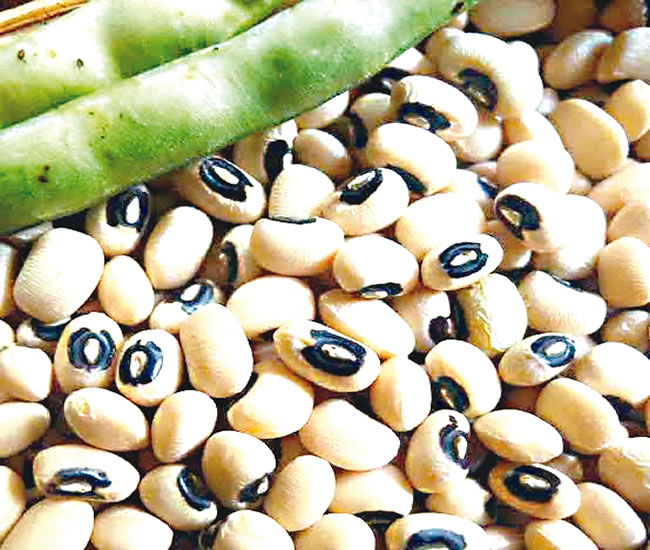At the end of 2019, cowpea became the second genetically modified crop to be approved for commercialization in Nigeria. The Pod Borer Resistant (PBR) Cowpea, as it is called, is resistant to Maruca, the insect pest that is the major cause of yield loss in cowpea. The National Biosafety Management Agency (NBMA) earlier granted a permit for the environmental release of PBR cowpea in Nigeria.
The event marks an important milestone for Nigerian and African agriculture, as it paves the way for GM crops to be developed and adopted on a larger scale on the continent. This will bring many benefits to farmers, including improving crop yields and the food supply, as well as reducing the amount of harmful pesticides used.
The importance of this development cannot be overstated, cowpea is actually a wonder plant that is very useful and the major source of vegetable protein in most African countries especially in the West Africa sub-region. In Nigeria, including its ‘sibling’ beans, the average consumption is approximately 8.6kg per person, per year.
It is not only a popular food item which can be eaten fresh, relished or processed into various forms like dry seeds, dawadawa (ogiri) and flour, but also a major source of income for many farmers in Nigeria.
However, the productivity of cowpea is greatly hampered by a number of factors including pests, diseases, drought, low soil fertility, and low agronomic practices. Add to that, the use of outdated technology is more common, with more than 90% of farmers still using traditional farming methods.
All these results in a relatively low yield of about 350kg – 600kg per hectare compared to the potential yield of 1,000kg – 2,000kg per hectare.
Cowpea is the most important grain legume in Nigeria in terms of total area and total production. According to the Federal Ministry of Agriculture and Rural Development Nigeria, the crop is grown in almost every state in the country, having an estimated total area of 3,500,000 ha and total production of 2,500,000 tonnes per annum and an average yield of 359 kg/ha.
This production level makes Nigeria the largest producer of cowpea in the world, having an estimated 51 percent of Africa’s and 17percent of the world’s total cowpea production.
About a decade ago, AATF coordinated an international network of partners that used Genetic modification (GM) which involves altering the genetic material of plants or animals in order to obtain desired characteristics to address the issues of pest infestation that is endemic to cowpea and only chemical sprays offers solution to farmers.
PBR cowpea has been genetically modified to express a crystal protein, which helps the plant to protect itself from Maruca, one of the most harmful pests to cowpea production in Nigeria and sub-Saharan Africa.
Although, GM technology has been widely used in the medical field to produce hormones, vaccines, and other pharmaceuticals, but its application in agriculture has attracted more attention in recent years.
One major benefit of GM crops has avail farmers remained the incorporation of pest and disease-resistant traits. When these crops are grown, farmers often need to use less chemical pesticide and therefore reduce the impact of modern agriculture on the environment.
On the other hand, climate change regulations and population growth mean that the demand for sustainable agriculture is increasing. GM technology offers a solution to produce more sustainable and environmentally friendly agriculture, as well as ensuring food security for an ever-growing global population.
This is why the development of pest and disease-resistant genetic modification in cowpea is crucial to both the economy and public health in Nigeria and sub-Saharan Africa.
The President of All Farmers Association of Nigeria (AFAN), Arc Kabiru Ibrahim in a recent interview noted that the development and release of PBR Cowpea has the potential of lifting numerous Nigerian farmers out of poverty.
“For the first time in a long while, farmers in the country now can plant cowpea popularly called beans without fear of how to afford chemicals to spray the field about 10 times which is usually unaffordable by smallholder farmers but today you only need to spray twice and you are assured of a yield of 3 tons per hectare,: he said.
Abdullahi Sule a farmer in Kano state, Nigeria said since the introduction of the PBR Cowpea variety in 2019, he has consistently planted the variety twice yearly and continued to experience bumper harvest.
“Almost all farmers in Tudun Wada Local government area of Kano state are now planting the PBR Cowpea variety. It is early maturing, uses less chemicals and the yield is worth the efforts,” he added.
Cowpea is a constant factor on the daily menu of most Nigerian homes as it a veritable replacement for animal protein. The major producing states in Nigeria include Borno, Yobe, Adamawa, Gombe, and Taraba in the North-East; Kano, Katsina, Jigawa, Sokoto, and Zamfara in the North-West; Kogi, FCT, Benue, and Kwara in the North-Central; Lagos, Ogun, Oyo, Osun, and Ondo in the South-West; Imo, Abia, and Ebonyi in the South-East; and Delta, Edo, and part of Rivers in the South. These statistics clearly show the economic and production importance of cowpea in Nigeria.
Cowpea (Vigna unguiculata), a native of Africa, is the most important grain legume in semi-arid tropic regions of the world, and it is a major source of vegetable protein in the human diet in Nigeria and other countries of sub-Saharan Africa.
It plays a crucial role in the lives of people and their livestock in these areas. The crop is a significant source of income for small-scale farmers in Nigeria, and it contributes immensely to the livelihood of the rural poor in most of the southern and northern regions of the country.
Considering massive adoption of the PBR Cowpea variety in the last three years and the inability of seed companies to satisfy the ever increasing demand for the variety from farmers, it is safe to say that Nigeria is on a steady course to bridging the 500,000 metric tons annual cowpea deficit.






